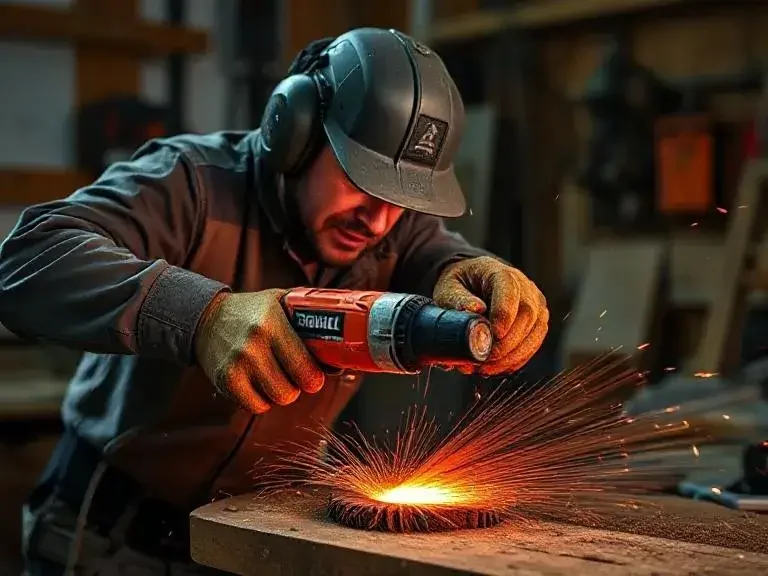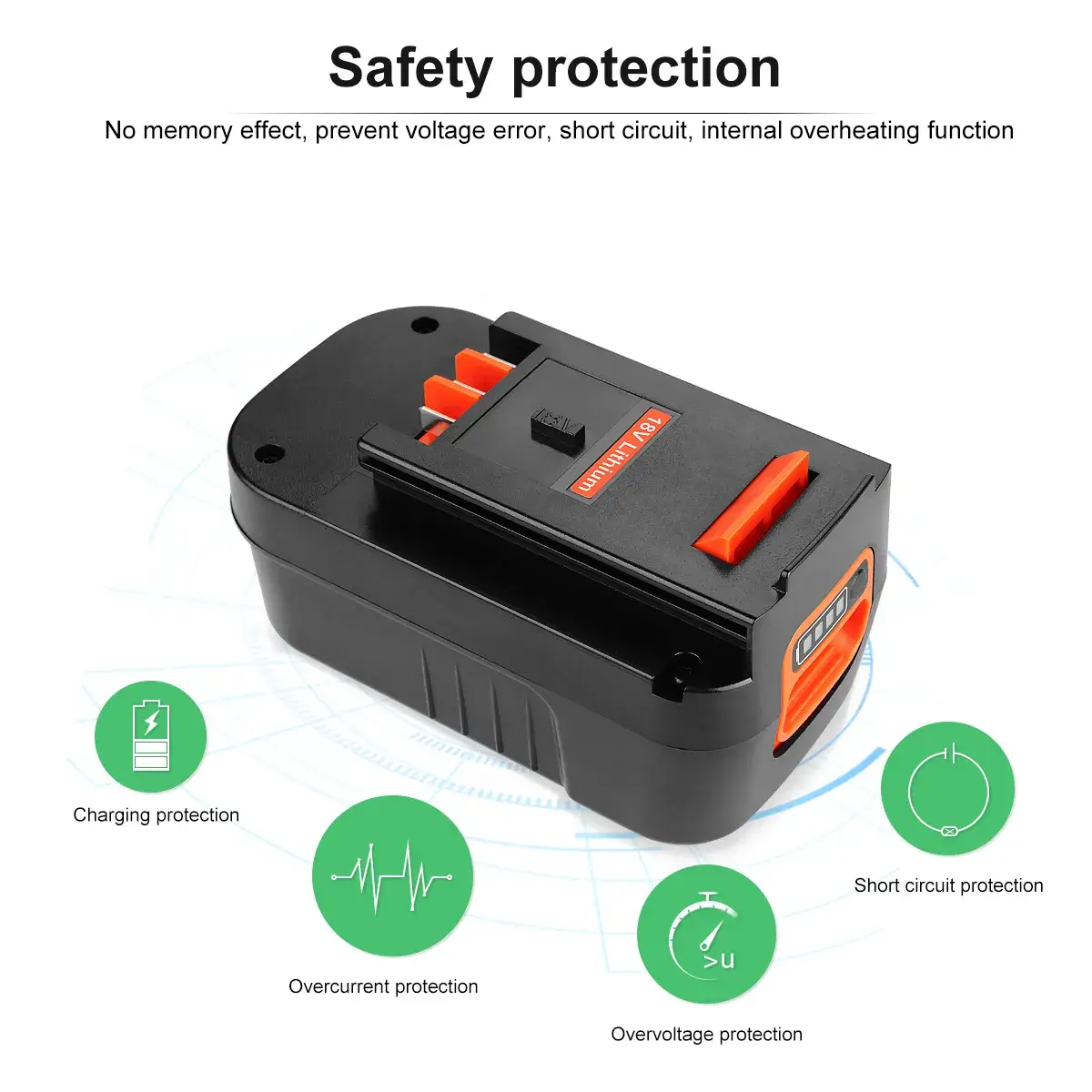What Is Never To Be Engaged When Using Power Tools? 10 Critical Safety Bans
This article emphasizes safety precautions when using power tools, outlining 10 critical "things to never do" to avoid accidents. These include: avoiding loose clothing or jewelry, ensuring safety guards are in place, never operating tools with one hand, not using tools in wet conditions, and refraining from using damaged tools. It also highlights proper tool maintenance practices, such as avoiding cleaning tools with water and using appropriate parts for repairs. The article provides emergency response guidance, such as how to handle electrical shock incidents. Overall, the article aims to reduce injuries and accidents caused by improper power tool use by following these safety protocols.

Introduction
When it comes to power tools, safety should always be the top priority. A single lapse in attention can lead to severe injuries or even fatalities. Whether you're a seasoned professional or a DIY enthusiast, understanding and adhering to the critical safety bans is essential for preventing accidents and ensuring the well-being of everyone in the workplace.
What Are the Top 10 Things You Should NEVER Do with Power Tools?
To operate power tools safely, it’s crucial to avoid specific dangerous behaviors. Let’s dive into the top 10 things you should never do with power tools.
1. Never wear loose clothing or jewelry around power tools.
Risk: Loose clothing or jewelry can get caught in rotating parts, leading to serious injuries or entanglement.
Illustration: Picture a situation where a sleeve catches on a rotating blade, causing the operator to lose control. Always ensure clothing is fitted, and remove jewelry before use. This simple precaution can save you from potentially life-threatening situations.

2. Never bypass safety guards on power tools.
Risk: Safety guards are in place to prevent exposure to moving parts, flying debris, and accidents. Removing or bypassing them can lead to severe injuries.
Case Study: A worker suffered severe lacerations when they removed the safety guard from an angle grinder, exposing themselves to flying shards. Always use the safety guards as intended.
3. Never operate power tools with one hand.
Risk: Operating tools with one hand increases the risk of losing control, especially with high-torque tools like saws or drills.
Safety Tip: Keep both hands firmly on the tool to maintain control and minimize the risk of accidents.
4. Never use power tools in wet or rainy conditions.
Risk: Wet conditions significantly increase the risk of electrocution. Always check that power tools are dry, and be cautious when using them outdoors, especially in unpredictable weather.
5. Never use damaged power tools.
Risk: A tool with a damaged cord or exposed wiring can cause electrocution, fires, or tool malfunctions. Always inspect your tools before use and repair any damage immediately.
Why Do These Safety Rules Matter for Power Tool Operation?
Safety rules for power tool operation are crucial to prevent accidents, injuries, and long-term health issues. By following proper guidelines, you ensure the tool functions as intended, reducing the risk of malfunctions or misuse. Safety rules also promote a safe working environment, protect against electrical hazards, and help avoid repetitive stress injuries. Wearing the right protective equipment, maintaining tools, and using them according to manufacturer instructions are essential for safe operation and efficiency. Proper safety practices also foster accountability, ensuring everyone in the workspace understands and follows necessary precautions.
Understanding why these safety rules exist is critical for preventing injuries. According to OSHA, each year, thousands of injuries occur due to improper use of power tools. Adhering to safety guidelines can significantly reduce these incidents. Safety measures aren’t just suggestions—they are essential protocols designed to protect workers and bystanders.
What Are Some Scenario-Specific Safety Bans?
Some scenario-specific safety prohibitions are developed based on the risks of a specific environment or task. For example, it is prohibited to use power tools in wet environments to prevent electric shock, or it is prohibited to use tools that are prone to sparks in flammable areas. In addition, it is prohibited to operate tools without wearing necessary protective equipment, or it is prohibited for untrained personnel to use specific tools. These prohibitions help reduce specific risks and ensure safe operations.
Let’s look at some scenario-specific rules:
1. Never use power tools while distracted
Whether it’s from a phone, conversation, or multitasking, distractions while using power tools can have serious consequences. Stay focused and ensure your full attention is on the task at hand.
2. Never operate power tools without proper protective equipment (PPE)
Always wear the recommended PPE, including goggles, ear protection, gloves, and a dust mask, depending on the type of tool you’re using. PPE acts as a barrier against flying debris, excessive noise, and other hazards.
What Tool Maintenance Practices Should You Never Follow?
Some tool maintenance practices should be strictly avoided to ensure safety and longevity of equipment. Never ignore regular cleaning and lubrication, as dirt and rust can impair tool performance. Avoid using makeshift parts or repairs, as they can compromise safety. Never use a damaged tool or one with worn-out safety features, and always replace or repair faulty components immediately. It’s also crucial not to bypass safety mechanisms (e.g., safety switches or guards), as doing so increases the risk of injury. Lastly, don’t neglect proper storage—tools left exposed to the elements can deteriorate quickly.
Maintaining power tools is just as important as operating them correctly. Here are some common maintenance mistakes to avoid:
1. Never Wash Power Tools with Water
Risk: Water can damage the internal components of power tools, causing electrical shorts or corrosion. Instead, clean tools with a dry cloth or use specialized cleaners designed for tool maintenance.
2. Never Use Improper Parts or Substitutes for Repairs
Risk: Using unapproved or non-standard replacement parts can compromise the tool's safety and performance. Always use parts that meet the manufacturer's specifications.

What Should You Do Instead to Ensure Power Tool Safety?
To ensure power tool safety, always follow manufacturer guidelines for proper use, maintenance, and storage. Regularly inspect tools for damage or wear and promptly repair or replace faulty parts. Clean and lubricate tools according to the recommended schedule to maintain peak performance. Use the correct tool for the task at hand, and ensure that safety features, such as guards or emergency shutoffs, are always in place. Wear appropriate personal protective equipment (PPE), such as goggles, gloves, and ear protection, and keep your workspace organized and well-lit to reduce hazards.
Instead of risky behaviors, here are some safer practices to follow:
- Use anti-slip gloves to ensure a firm grip on tools and reduce hand strain.
- Choose moisture-resistant tools when working in damp or wet conditions to minimize the risk of electrocution.
By following these safer practices, you can significantly reduce the likelihood of accidents and enhance the overall safety of your workspace.
How Should You Respond in Case of an Emergency?
In case of an emergency, stay calm and take immediate action to minimize harm. First, stop using the tool and switch it off if it’s safe to do so. Assess the situation—if someone is injured, call emergency services immediately and provide clear details about the injury and location. Administer first aid if you’re trained and it’s necessary. Ensure that the work area is secured to prevent further accidents. After the incident, report it to the appropriate safety officer or supervisor, and review the cause to prevent future occurrences. Always keep emergency contact numbers and first aid kits accessible.
Knowing how to respond in an emergency is critical for minimizing harm. Here's how you should react to common tool-related accidents:
1. What to Do if Someone Suffers from an Electrical Shock?
- Step 1: Immediately disconnect the power source.
- Step 2: If safe to do so, administer CPR if needed.
- Step 3: Call for medical assistance immediately.
Make sure you’re trained in first aid to act quickly and effectively during emergencies.
FAQ: What Should You Avoid When Using Powered Tools?
Can I Use a Power Tool if the Cord Is Slightly Damaged?
Answer: Never use power tools with damaged cords. Exposed wiring can cause electrocution or fires. Always inspect cords before use, and replace or repair damaged parts immediately.
Conclusion
By adhering to these safety guidelines, you can greatly minimize the risks associated with power tool use. Proper training, equipment, and maintenance are essential for keeping yourself and others safe. Share this knowledge with coworkers and ensure that everyone understands the importance of safety protocols.